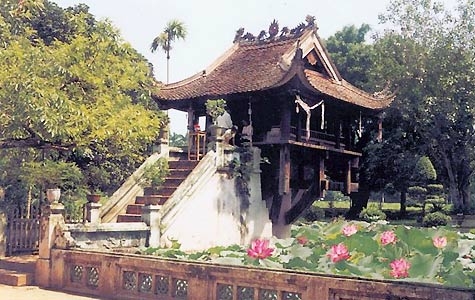One pillar pagoda receives Asian recognition
The Vietnam Buddhist Sangha hosted a ceremony on November 12 in Hanoi to receive a certificate of “the most unique architecture in Asia” awarded to the One Pillar Pagoda, a historic Buddhist temple in Hanoi.

The Asian Records Organisation made the recognition in Faridabad of India on October 10.
Originally dubbed Dien Huu, which means long-lasting happiness and good luck, the pagoda was built in 1049 at the order of King Ly Thai Tong. During the Ly Dynasty, it was the site where royal ceremonies were held to celebrate such Buddhist events as Vesak or Buddha’s birthday.
The pagoda was built of wood on a single stone pillar 1.25m in diameter, 4m high and resembled a great square-shaped lotus blossom, the Buddhist symbol of purity.
With all its architectural and historical values, the pagoda was classified as a national historic site in 1962.
What the stars mean:
★ Poor ★ ★ Promising ★★★ Good ★★★★ Very good ★★★★★ Exceptional
Latest News
More News
- Vietnam among top 3 destinations appealing to Australians (December 19, 2024 | 16:09)
- Hanoi’s tourism boom: Over 25 million visitors and counting (December 10, 2024 | 17:57)
- Hanoi to strengthen presence on global tourism map (December 06, 2024 | 11:49)
- Hanoi’s new opera house to become a cultural landmark (December 05, 2024 | 18:12)
- Potential for retirement tourism in Vietnam (December 04, 2024 | 10:47)
- New opportunities for cultural tourism (December 04, 2024 | 10:40)
- Ba Ria-Vung Tau sets eyes on tourism growth (December 02, 2024 | 16:51)
- Hanoi Old Quarter marks 20 years of national heritage status (December 02, 2024 | 16:46)
- Vietnam named World’s Leading Heritage Destination for sixth year (December 02, 2024 | 16:22)
- Hanoi's culture shines bright through night activities (November 30, 2024 | 10:00)


















 Mobile Version
Mobile Version